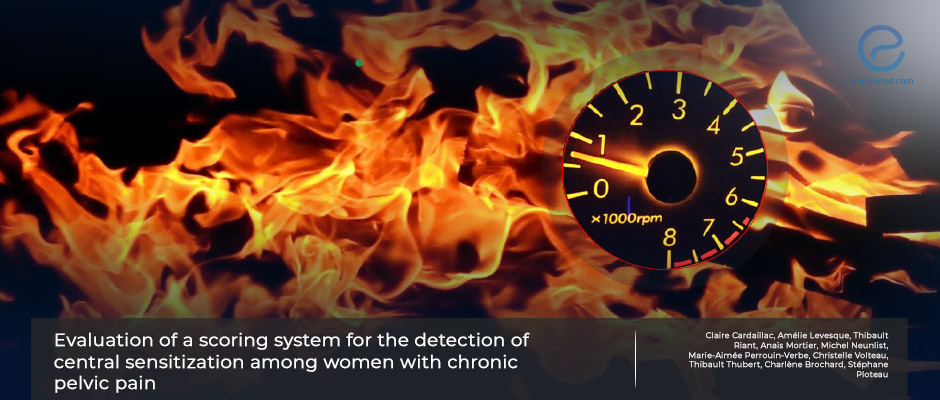Objective Assessment of Pain Sensitization in Women With Chronic Pelvic Pain
Aug 18, 2023
There are elements that can help assess central sensitization independently of a person’s psychological state.
Key Points
Highlights:
- It is possible to measure central sensitization independently from psychological factors.
Importance:
- This is the first study to assess the objectivity of pain sensitization in the case of chronic pelvic pain.
What’s done here:
- Researchers analyzed a total of 53 women having chronic pelvic pain of whom 35.8% had endometriosis.
- All women were subjected to a non-invasive bladder sensory test, a rectal barostat, and a muscular and vulvar sensory test.
- Participants’ pain, quality of life, and psychological state including anxiety, depression, and catastrophizing were examined.
Key results:
- The pain felt at each cystometric threshold was significantly higher among women with a high sensitization score than women with a low score.
- Women with a high sensitization score had significantly increased pain felt when a rectal barostat was used compared to those with a low score.
- The average of pain pressure threshold was lower in women with a high sensitization score in the vulvar and muscular sensory tests.
- It took longer for the pain to go away after stimulation in women with a high sensitization score than those with a low score.
- There was no link between the sensory thresholds and the psychological state of the women.
Limitations:
- This is a study that has a relatively small sample size, and results should be verified in a larger group of women.
Lay Summary
There are objective elements that can help assess the presence of central sensitization, independently of psychological factors, according to a new study published in the American Journal of Obstetrics and Gynecology. This is the first study that assessed whether central sensitization in the pelvic and perineal areas can be measured objectively with neurophysiological tests. Central sensitization is defined as a hypersensitivity to an external stimulus.
The study led by Dr. Stéphane Ploteau from the Department of Obstetrics, Gynecology and Reproductive Medicine and Federative Pelvic Pain Center at Nantes University Hospital in France was a prospective, assessor-blinded, comparative one. It evaluated pain thresholds and spatial and temporal diffusion of pain among women with chronic pelvic pain and high or low scores of central sensitization. Fifty-three women with chronic pelvic pain of whom 35.8% had endometriosis were examined; pain, quality of life, and psychological state including anxiety, depression, and catastrophizing were assessed. All women were subjected to a non-invasive bladder sensory test, a rectal barostat, and a muscular and vulvar sensory test.
Twenty-nine patients had a high chronic pelvic pain score, i.e. more than 5 over 10 while 24 had a low or below 5 pain score. The authors reported that women who had a high sensitization score had more painful diseases diagnosed and suffered for longer compared to those who had a low score. Even though the maximum capacity of the bladder was similar between the women, the pain that they felt at each cystometric threshold was significantly higher among those who had a high sensitization score compared to those who had a low score. There were no differences between women in terms of rectal pain pressure step. However, rectal compliance was lower in women who had a high sensitization score. For vulvar and muscular sensory tests, the average of pain pressure thresholds was also lower in women with a high sensitization score. Finally, women who had a high sensitization score needed more time to reach a visual analog scale score of less than 3 out of 10 following bladder, rectum, and muscle stimulation.
The main reason for the chronic pelvic pain was endometriosis. Other reasons were irritable bowel syndrome, bladder pain syndrome, and vestibulodynia, or pain that occurs at the entrance of the vagina with no known cause.
Importantly, the psychological state of the women was similar and the researchers found no link between the sensory thresholds and the psychological state of the women. Moreover, even though the physical component of the quality of life was reduced in women with a high sensitization score the mental component was not.
Research Source: https://pubmed.ncbi.nlm.nih.gov/37516398/
chronic pelvic pain pain threshold central sensitization

